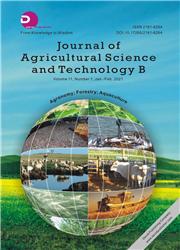Optimal Variable Combinations of Co-pelletization of Eucalyptus Sawdust and Natural Forest Sawdust
引用次数: 0
Abstract
Eucalyptus sawdust is a residue from fast-growing forest processing. Utilization of Eucalyptus sawdust as fuel by co-pelletization with natural forest sawdust could solve problems of waste disposal and material supply limitation of pellet production. This work targeted at providing a useful reference for improving pellet properties and optimizing variable combinations. Experiments were arranged using response surface methodology with a central composite design and carried out using a uniaxial piston-cylinder densification apparatus. Based on the analysis of variance of effects of variables on responses, the optimal models were all selected as quadratic and expressed in the form of regression equations. The differences between adjusted R and predicted R are all within 0.2 and the adequate precision is all greater than four illustrating the reliability of the established models. The optimal variable combinations were obtained according to the desired response goals and validation experiments were conducted. Errors between response predicted and actual values were calculated and applied to improve the model accuracy. After modification, final errors were reduced to less than 9% and could be accepted by pellet production. Experimental results also demonstrated that pellet properties and higher heating value were all increased by co-pelletization and optimization. This will be very beneficial for pellet application. Furthermore, these results could provide the required data for designing a suitable machine of pellet production.桉树木屑与天然林木屑共制粒的最佳变量组合
桉树锯末是速生森林加工的残留物。利用桉树木屑作为燃料,与天然林木屑共制颗粒,可以解决废弃物处理和颗粒生产原料供应不足的问题。本工作旨在为改善颗粒性能和优化变量组合提供有益的参考。实验采用响应面法和中心复合设计,采用单轴活塞-气缸致密化装置进行。在分析各变量对响应影响的方差的基础上,选择最优模型均为二次型,并以回归方程的形式表示。调整后的R与预测的R之差均在0.2以内,适当精度均大于4,说明所建模型的可靠性。根据期望的响应目标获得了最优的变量组合,并进行了验证实验。计算了预测响应值与实际响应值的误差,提高了模型的精度。经过改进,最终误差降至9%以下,可用于颗粒生产。实验结果还表明,共制球和优化均能提高球团的性能和更高的热值。这将非常有利于颗粒的应用。此外,这些结果可以为设计合适的颗粒生产机器提供必要的数据。
本文章由计算机程序翻译,如有差异,请以英文原文为准。
求助全文
约1分钟内获得全文
求助全文

 求助内容:
求助内容: 应助结果提醒方式:
应助结果提醒方式:


